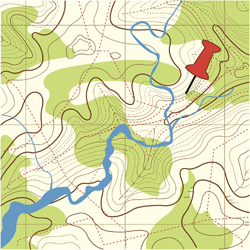Determining how the land lies digitally
Quantitative land surface analysis (geomorphometry) is the modern version of cartography as related to bare-earth topography. It exploits computer analysis of the heights of a terrain. Scientists initiated the EU-funded project 'Scales and hierarchies in geomorphometry' (SCALA-PLUS) to develop a modelling framework based on the hierarchical organisation of landforms through segmentation of multi-scale parameters. First, investigators applied local variance (LV) methods to identify characteristic scales in landscapes from digital elevation models (DEMs). DEMs represent a given terrain as an array of regularly spaced elevation values. Coupling these promising methods with OBIA, the result is a tool to find suitable characteristic scales in DEMs as a function of averaged standard deviation of geomorphic objects. The scientists then integrated terrain information into nested hierarchies of landforms through automated classification of the geomorphic features. The tool enables data exploration at the global scale and is available in a web-based application. The SCALA-PLUS project has contributed two valuable tools for hierarchical classification of landforms at multiple nested scales. Freely available on the web, they will no doubt further the work of numerous scientists in the field of geomorphometry and related disciplines.





